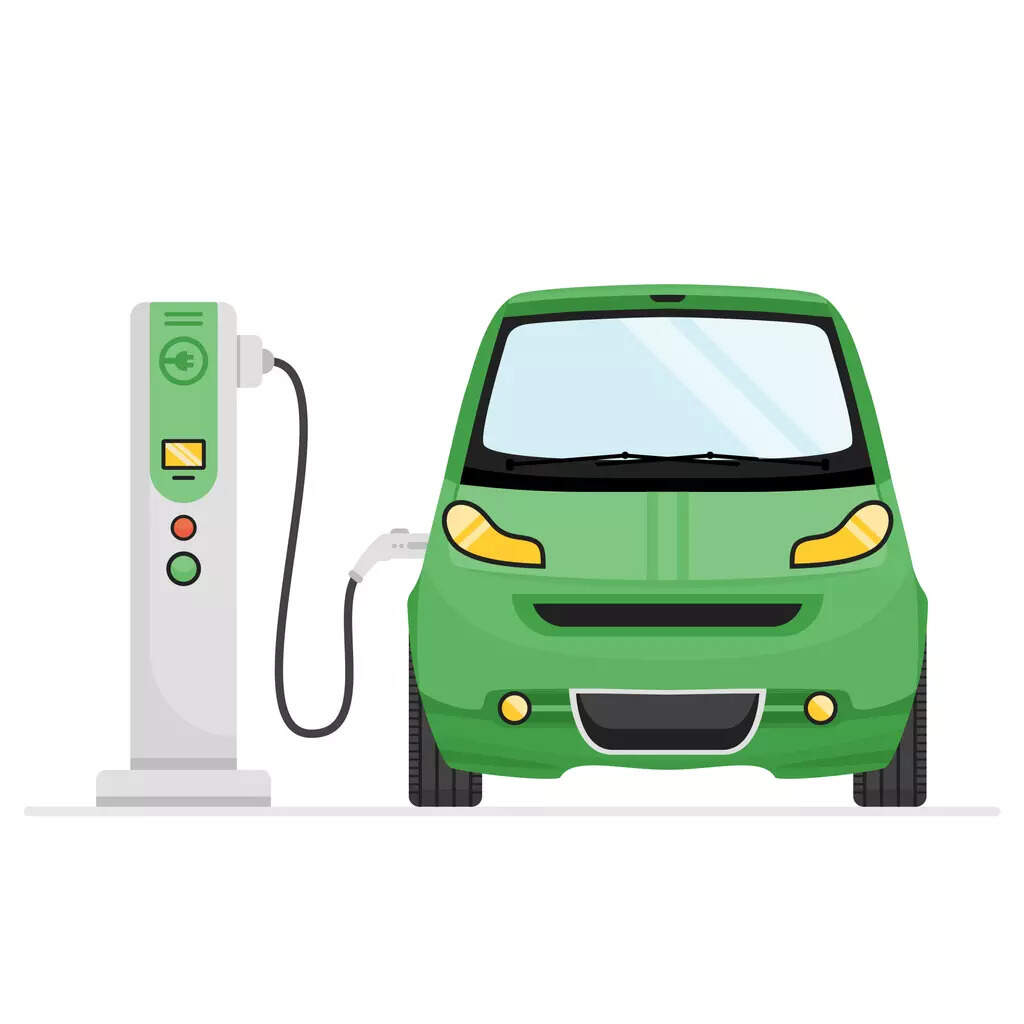
New Delhi: India is poised to become one of the key players in the electric vehicle (EV) ecosystem. The Economic Survey of 2023 forecasted a remarkable 49% CAGR for India’s domestic EV market between 2022 and 2030. This trajectory is anticipated to yield a predicted annual sales volume of nearly 10 million units by 2030.
Fiscal year 2023 alone witnessed a notable surge in EV sales, surpassing 1.2 million units—a staggering 154% increase from the preceding fiscal year. This encouraging statistic aligns with the Government of India’s strategic vision, aiming to elevate the contribution of the automotive sector to the nation’s GDP from its current standing at 7.1% to 12%. The goal is to focus on improving efficiency and bolstering safety measures within the EV ecosystem. In line with this overarching vision, several state governments, including those of Assam, Telangana, Tamil Nadu, and Gujarat, have proactively instituted policies and initiatives designed to incentivize and propel EV manufacturing within their respective jurisdictions.
Today, India is the world’s third-largest oil importer. It is poised for a transformative shift, aiming to redirect 30% of road traffic to EVs by 2030 to help reduce harmful emissions. This endeavor not only promises to enhance India’s standing on both environmental and economic fronts but also serves as a critical response to 2019, the year when 1.2 million people died due to the harmful effects of poor air quality—an alarming toll that extends beyond the casualties incurred during the manufacturing lifecycle.
As India aspires to solidify its status as a manufacturing hub, it must address a pressing issue within its rapidly expanding automotive sector supply chain: thousands of workers annually fall victim to injuries on the job. According to the Directorate General Factory Advice Service and Labour Institutes, in 2020, the automobile manufacturing sector in India saw nearly 4,000 recorded injuries, of which 1,050 resulted in fatalities—significantly, 65% of these casualties were under the age of 30. Considering these statistics, it becomes imperative to address and rectify safety concerns within the automotive manufacturing sphere, to improve the welfare of the workers. Let us explore different interventions that can be implemented in the EV factory-to-road lifecycle to effectively manage risks.
Mitigating risks of EV fires
Lithium-ion batteries used in EVs are less likely to catch fire at low temperatures than petrol-fuelled vehicles. However, various factors can lead to “thermal runaway” in the battery; these include external heating of the battery cell, overcharge, short circuiting from flooding or coolant leakage, and impact on the battery from an accident or nail penetration. Defects in design and issues in manufacturing practices can also lead to thermal runaway, which can progress to smoke or vehicle fires. Toxic fumes add more challenges for fire-fighters, as different approaches are required to combat the flames from EV blazes. The rare risk of explosion is also always present whenever working with or around an electric vehicle.
It is therefore a priority to address the risk of EV fires. To facilitate a safe transition to a low-carbon transportation and energy system, it is critical to establish resilient educational and legal frameworks and develop technologies capable of effectively mitigating the associated risks for drivers, the first responders and the public.
The Indian government is leading by example – in 2019, it established the National Mission for Transformative Mobility and Battery Storage. This initiative extends support to companies by facilitating access to technical expertise and creating a favourable business environment for advancing electric vehicle battery technology.
Lastly, research and development into creating fail-safe mechanisms to abate the issue of thermal runaway is paramount. Battery safety sensing technology is already in use today that can detect early indicators of thermal runaway and warn passengers to exit the vehicle before a catastrophe occurs. Continuing to advance the systems that monitor and expansively analyze battery performance and the internal condition of EVs will enhance safety in the automotive manufacturing industry.
Personal protective equipment
Modern manufacturing facilities are intricate ecosystems, involving everything from manual assembly to high-tech automated processes. In this ever-evolving landscape, businesses face relentless pressure to drive growth and productivity while managing costs. The intricacies of modern manufacturing present demanding environments that have the potential for human error. It may lead to accidents on the factory floor, or injuries from thermal, chemical, and electrical hazards.
Personal protective equipment (PPE) is a must have in EV and lithium-ion battery manufacturing to protect workers. For example, in areas designated for battery production and installation, the use of electrical safety PPE is necessary, such as insulated gloves, respirators, and dielectric footwear. Likewise, during the battery cell assembly, coating, drying and degassing processes, PPE such as respiratory gear, hand protection, as well as face and head protection is essential to minimize potential risks associated with handling battery packs, like exposure to chemicals and the risk of short circuit electrical incidents. These tools shield workers against potential hazards, enabling them to carry out their tasks with confidence and safety.
Fortifying cybersecurity in EVs
Modern connected vehicles, while offering environmental benefits, also pose risk of cyber-attacks. Though technologies like adaptive cruise control and other automotive assistance features can greatly improve driving safety, comfort, and energy efficiency, integrating these control units into interconnected infrastructure raises cybersecurity issues. In-vehicle “infotainment” systems, employed to provide entertainment and valuable information via audio/video interfaces, touchscreen displays, button panels, and voice commands to both drivers and passengers, stand as prominent targets for potential attackers. Such vulnerabilities can grant them access to both safety-critical and non-safety functions.
Fighting this safety threat is going to take a two-pronged approach. First, integrating intelligent systems that take into consideration a secure on-board diagnostics port, better firewall systems, reliable hardware, and secure software updates is essential to counter the risk of cybersecurity attacks. Second, creating end-to-end penetration testing as well as prioritising code reviews and analysis is also fundamental.
Transformation of manufacturing units
Growing market demand and required scale at the manufacturing unit clearly indicates the need for digitization and automation of traditional processes for efficiency, profitability, and safety. Today, the industry demands a comprehensive approach that integrates advanced safety gear with cutting-edge safety technologies and streamlined workflows. From sensors for transmission control and hydraulic applications to brake, fuel, and engine systems, innovation is key.
Manufacturers today are turning to integrated workflow solutions that drive faster productivity and accuracy. These solutions offer real-time visibility into materials, parts, and finished goods flowing through manufacturing operations. This data empowers manufacturers to optimize processes, ensure product pedigree, and maintain consistent quality control.
A safer and more sustainable tomorrow
In summary, the automotive manufacturing industry is undergoing a remarkable transformation, thanks to electrification and the integration of automation, IoT, AI, and robotics. With adoption of new technologies and processes in EV manufacturing, safety remains a critical piece of the puzzle.
This transformation has not only increased the speed and dependability of production processes, but it has also introduced a new era of safety. With comprehensive training programs and enhanced safety measures firmly in place, the probability of accidents on the manufacturing floor will further diminish. As we move forward, commitment to worker safety should remain at the forefront of our industry’s mission, ensuring that progress is achieved in a secure and efficient environment.
(Disclaimer: Ashish Gaikwad is VP, GM Industrial Automation India, and MD, Honeywell Automation India Limited. Views are personal.)

